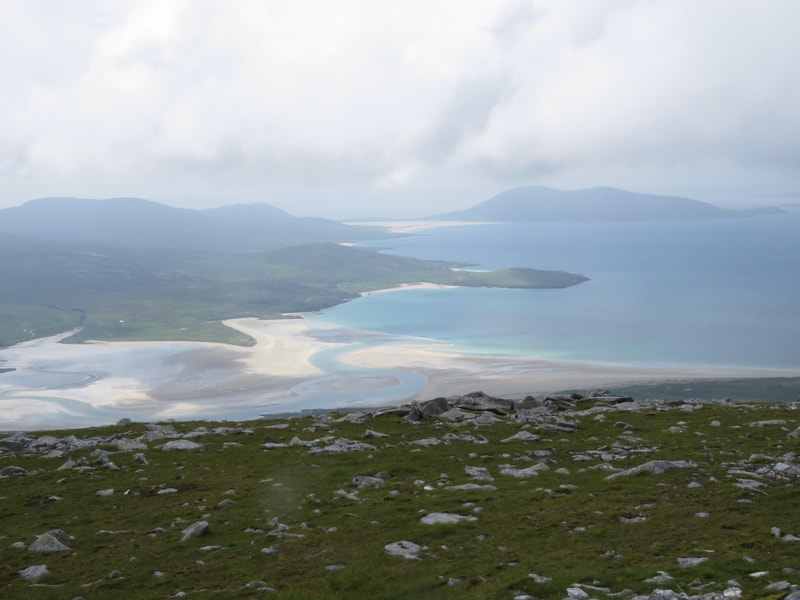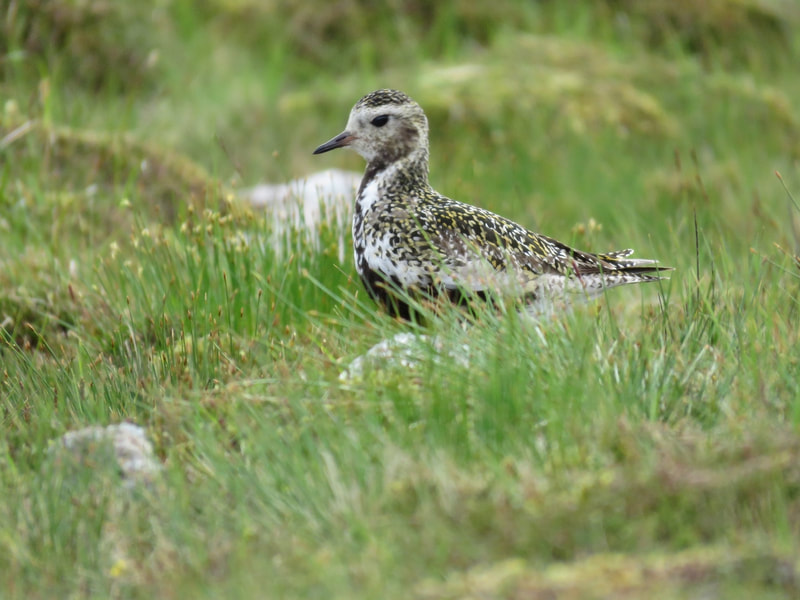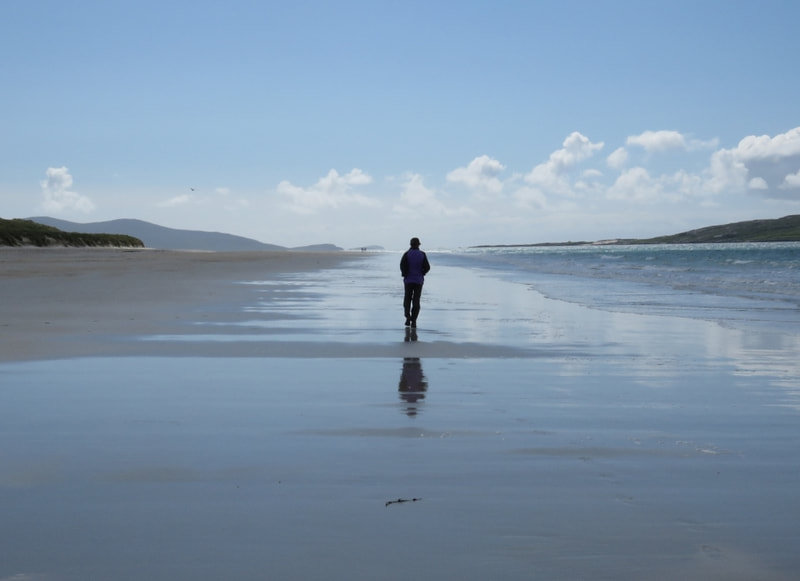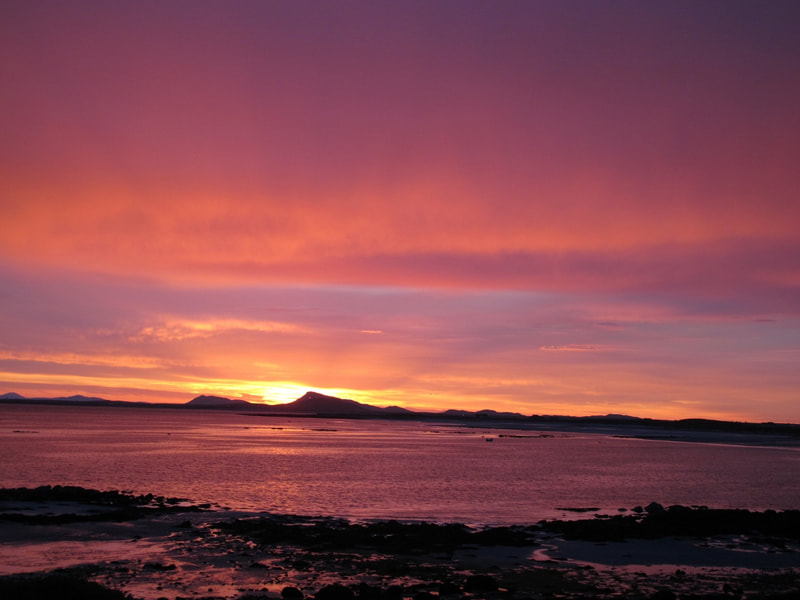 Beinn Losgaintir, Harris, Outer Hebrides
Beinn Losgaintir, Harris, Outer Hebrides A mile into our walk, squalls and heavy rain sweep in off the Atlantic so we turn back to wait for a better day. The sun comes out, so we take a different approach, a steepish yomp through deep heather with not a note of golden plover all the way to the summit of Beinn Dhubh. We overlook the Sound of Taransay, but soon see nothing. The temperature drops, mist engulfs us as we shelter amongst rocks in another downpour. We shiver over hot coffee. Through wind and rain I hear the plaintive note of golden plover, I think I hear it. Again and again the call but my friend hears nothing and suggests I'm conjuring it into being. Then yes, he hears it and like a ghost in the mist a golden plover appears up on the cluster of rocks which conceal us.
The rain eases, the mist dissolves to reveal a broad and grassy ridge with a scatter of rocks. Billowing sunlit cloud flows over Losgaintir and is reflected in glossy sands on the beach below. Wisps of cloud over high lochans. Volatile mist and golden plover calling, perching on rock, dipping out of sight, reappearing with the wind made visible in ruffled plumage. Golden plover, Pluvialis apricaria- the Latin name evokes this elemental day on Losgaintir. Through wind and rain, glorious in sunlight, the essence of golden plover. Reaching the summit cairn of Beinn Losgaintir we apricate, like apricots ripening against a sunny wall. Pluvialis apricaria, in rain and sun.
‘Listen,’ I whisper.
’What is it?’
‘Don’t know. Where is it?’
He finds the bird on a mossy rock. A dunlin. We inch forward, slowly, and sit quietly on a rock and listen and watch how sunlight and shadow play upon its plumage, highlighting a white feather ruffled on its belly with a mote of sunlight reflected in the eye. A long and leisurely while we contemplate this handsome bird until its lunch arrives in a cloud of midges. An intimate interlude with dunlin. And the novelty of its peeping voice. Dunlin, a dun-coloured bird, named for the its winter plumage when flocks of waders forage on the shore. In spring and summer he is resplendent and solitary.
Dunlin, of trilling call says Martin Hughes Games who presents winter dunlin in a flock on a beach. The plover’s page, the dunlin is called for its sharing a moorland breeding habitat with golden plover. Tweet of the Day’s dunlin call is not what we heard on Losgaintir and I trawl the internet to find the Audobon Society website has a recording I recognise. The British Trust for Ornithology gives call and detailed information on dunlin habit in an excellent video.
I doubt I'll ever again have such an intimate interlude with dunlin.
We return to Traigh Losgaintir, again and again. To the white sands of Traigh Losgaintir and a dynamic dune landscape created and recreated by winter storms, sand dunes stabilised by marram grass, to the Lewisian Gneiss of Beinn Losgaintir and glimpses of our summits of two days ago.
Today, we walk east to west on the coast to coast Coffin Route. East Harris is a knoc and lochan landscape, barren rock strewn with lochans- impossible to bury the dead. To the west, a cemetery and the deep fertile shell-sands of the machair. ‘Quagmire’ our walks book warns of the coffin route, but with new drainage ditches rimmed with flat stones, and a good gravel track, the way is unusually easy.
Ceol na Mara, the music of the sea. At Traigh Losgaintir we dream the music of the sea- shimmer of colours and sheen of sunlit cloud on glossy sands, contemplative as we wait for the tide to go out so we may walk around the dune headland, Tuagh Rosamot and the Sound of Taransay. To the tip of Losgaintir where there’s a wedding party among the dunes, the women in white the men in kilts. Glorious along the beach and back over the dunes on another lovely day.
Taking so many photographs, I contemplate their plumage and its cryptic colouring which allows them to blend into their moorland habitat. The intricacy and subtlety of pattern and colour and the blurring and smudging is exquisite.

























 RSS Feed
RSS Feed